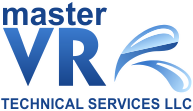
Maintaining a germ-free workspace is essential for promoting employee health, reducing absenteeism, and fostering a productive work environment. Implementing effective office cleaning practices ensures that your workplace remains hygienic and comfortable for everyone. Here are some best practices for keeping your office germ-free:
1. Develop a Cleaning Schedule
Establish a routine cleaning schedule to ensure all areas of the office are regularly cleaned and sanitized. High-traffic and shared spaces like break rooms, bathrooms, and meeting rooms should be cleaned daily, while less frequently used areas can be cleaned on a weekly basis.
2. Focus on High-Touch Surfaces
High-touch surfaces are hotspots for germs and regular cleaning of bacteria. Disinfect these areas frequently, including:
- Door handles and knobs
- Light switches
- Elevator buttons
- Desk phones
- Keyboards and mice
- Copier and printer buttons
Use disinfectant wipes or sprays to ensure these surfaces are germ-free.
3. Encourage Personal Workspace Hygiene
Encourage employees to maintain cleanliness in their personal workspaces. Provide them with cleaning supplies, such as disinfectant wipes and hand sanitizers, to clean their desks, keyboards, and phones regularly.
4. Maintain Clean Air
Indoor air quality plays a significant role in workplace health. Replace HVAC filters regularly and consider using air purifiers to reduce airborne pollutants and allergens. Adding indoor plants can also help improve air quality naturally.
5. Stock Up on Cleaning Supplies
Ensure the office is well-stocked with cleaning supplies, including:
- Disinfectant sprays and wipes
- Microfiber cloths
- Hand soap and hand sanitizer
- Trash bags
- Paper towels
Place supplies in easily accessible areas to encourage regular use.
6. Disinfect Shared Devices
Office equipment such as printers, copiers, and shared laptops should be sanitized regularly. Encourage employees to clean these devices after each use to prevent the spread of germs.
7. Promote Hand Hygiene
Proper hand hygiene is one of the most effective ways to prevent the spread of germs. Install hand sanitizer dispensers in key locations, such as:
- Entrances and exits
- Break rooms
- Meeting rooms
- Near shared equipment
Post reminders about handwashing in bathrooms and kitchen areas to reinforce good habits.
8. Implement a No-Eating-at-Desks Policy
Eating at desks can lead to crumbs and spills, which can attract pests and harbor bacteria. Encourage employees to eat in designated break areas and ensure those areas are cleaned thoroughly after meals.
9. Clean Upholstered Furniture
Upholstered chairs, couches, and other soft furnishings can harbor dust, allergens, and germs. Vacuum these items regularly and consider steam cleaning them periodically to maintain hygiene.
10. Empty Trash Bins Daily
Overflowing trash bins can be a breeding ground for bacteria and unpleasant odors. Ensure trash bins are emptied daily, and line them with bags to make disposal more efficient.
11. Hire Professional Cleaners
Professional cleaning services have the expertise and equipment to ensure a deep clean of your workspace. Schedule regular professional cleaning sessions for thorough disinfection of carpets, windows, and hard-to-reach areas.
12. Encourage Sick Employees to Stay Home
Prevent the spread of illness by encouraging employees to stay home when they’re sick. Provide remote work options when possible to minimize disruptions while maintaining a healthy workplace.
Conclusion
A clean office is not just about aesthetics—it’s about creating a safe and healthy environment for everyone. By following these best practices, you can ensure your workspace remains germ-free and conducive to productivity. Consistent cleaning and hygiene habits, coupled with professional support, will help keep your office running smoothly.




